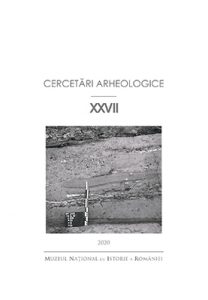Prehistoric adornments from Cuina Turcului
Prehistoric adornments from Cuina Turcului
Author(s): Monica Mărgărit, Adina Boroneant, Clive BonsallSubject(s): History, Archaeology
Published by: MUZEUL NAȚIONAL DE ISTORIE A ROMÂNIEI
Keywords: Iron Gates; Mesolithic; Early Neolithic; personal adornments; technical transformational scheme; use-wear marks;
Summary/Abstract: In this study we examine in detail the prehistoric personal adornments from Cuina Turcului rockshelter (Mehedinți County, Romania). Early Mesolithic (‘Epipalaeolithic’) and Early Neolithic assemblages are compared from the perspectives of context, typology and use-wear. Ornaments from the ‘Epipalaeolithic’ horizons include shells of freshwater gastropods (Lithoglyphus naticoides, Lithoglyphus apertus, Theodoxus danubialis), marine gastropods (Tritia sp.) and scaphopods. Mammalian teeth (Cervus elaphus, Sus scrofa, Canis lupus, Castor fiber, etc.) were perforated. Pendants were obtained by perforating fish vertebrae, as well as segments of mammalian bone and antler. During the Early Neolithic, the shells of Lithoglyphus naticoides and Theodoxus danubialis continued to be used along with scaphopod (tusk) shells. The inventory also includes a marine gastropod, Columbella sp., known from Mesolithic and Early Neolithic contexts elsewhere in the Iron Gates. The presence of a single perforated fox canine suggests that mammalian teeth continued to be turned into pendants. However, new forms of adornment appeared, including cylindrical and disc beads made of various materials, bone buttons and stone decorative elements. These involved more complex technological schemes for processing raw materials. The finds from Cuina Turcului provide evidence for the continuation within the Iron Gates region of Mesolithic ornamental traditions into the Early Neolithic alongside the appearance of new ‘Neolithic’ types, consistent with the arrival and integration into the region of a new population with different cultural traditions.
Journal: Cercetări Arheologice
- Issue Year: XXVII/2020
- Issue No: 1
- Page Range: 45-71
- Page Count: 27
- Language: English

